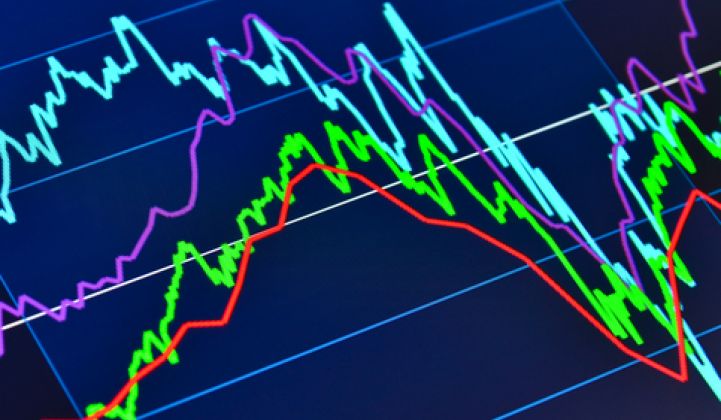Last month, the Massachusetts Department of Energy Resources (DOER) published an updated draft of the second phase of its Solar Renewable Energy Credit program (SREC-II), the goal of which is to install 1,600 megawatts of solar photovoltaic projects by 2020. Once formal review proceedings are completed, the program should become effective in early Q2.
Program Sustainability and Pacing Out Development
SREC-II’s provisions differ greatly from those of SREC-I, which has proven highly successful in advancing solar adoption in the state since going into effect in January 2010. Its requirements were relatively basic, leaving it open-ended in terms of what types of projects could apply for development, including large ground-mounted projects on greenfields up to 6 megawatts.
One challenge, however, was that the development of projects of this size fast-forwarded the industry toward meeting SREC-I’s capacity cap far ahead of schedule, without SREC-II provisions in place to inform additional projects in the queue: the goal of developing 400 megawatts across the Commonwealth by 2016 was already met by the end of 2013.
With this in mind, the new guidelines and restrictions under SREC-II were designed to address program sustainability shortcomings and in consideration of Massachusetts’ evolving solar market.
Shift From Large Ground-Mounts to Low-Hanging Fruit
SREC-II clearly shifts development away from large, standalone ground-mounts and toward three specific market sectors, each of which is assigned a certain SREC factor.
- Market Sector A: Residential or carport projects, or any project up to 25 kilowatts, SREC factor of 1.0
- Market Sector B: Rooftop or ground-mounted projects greater than 25 kilowatts with at least two-thirds of annual output used onsite (i.e., behind an existing meter), SREC factor of 0.9
- Market Sector C: Landfill or brownfield projects, or projects up to 650 kilowatts with less than two-thirds of annual output used onsite, SREC factor of 0.8
Anything that doesn’t fit within these categories (for example, large ground-mounts on greenfields) now fit into a “managed growth” category with the lowest SREC factor of 0.7. The program will also set an annual limit to the number of total megawatts awarded to projects within the managed growth category, whereas there is no cap on development within the other sectors. For 2014, the limit has been set at roughly 25 megawatts, and for 2015, the limit will be roughly 80 megawatts.
Given the significant overhang of partially developed large ground-mounted projects on greenfields that did not make it into SREC-I, it is possible that a managed growth project starting its development today might not receive an SREC allocation until 2016. In order to have made it into SREC-I, a project must have had an executed interconnection service agreement and all of its non-ministerial permits (essentially everything except a building and electrical permit) by June 7, 2013.
There will be projects that made this cutoff but ultimately did not get constructed under SREC-I. Additionally, there are projects that had some amount of development completed that did not make the June 7 SREC-I cutoff. These projects will presumably be the first in line for the roughly 100 megawatts available through SREC-II’s managed growth market sector over the next two years. It is not difficult to imagine a scenario where there are 100 megawatts or more at an advanced enough stage that are ready to apply for a managed growth allocation as soon as the program is open, which will be sometime this summer.
By incentivizing development on landfills, brownfields and rooftops, the DOER is appropriately prioritizing productive use on otherwise unused space. And as there are only so many landfills, brownfields and rooftops in Massachusetts, the DOER can find comfort in a relatively predictable pace of development. From a zoning perspective, the logic is to take care of the low-hanging fruit first.
Subsidy Reduction: An Industry Ready to Do More With Less
Under SREC-I, every megawatt-hour generated by every project produced one SREC. Under SREC-II, only projects that qualify for Market Sector A will receive one SREC for every megawatt-hour generated, because a project in Market Sector A will receive an SREC factor of 1.0.
Projects in Market Sector B receive an SREC factor of 0.9. This means that if a project in Market Sector B produces 10 megawatt-hours, it receives nine SRECs. The DOER has purposefully chosen to adjust the amount of SRECs that projects receive based on what Market Sector they are in, as opposed to trying to adjust the value of SRECs within a market sector. The value of an SREC is the same regardless of what market sector the project is in. It’s simply the quantity of SRECs that is adjusted by assigning an SREC factor to each market sector.
With SREC-II comes more restrictions, but the market can and will adjust. Business models will recalibrate according to program shifts. From a solar developer’s perspective, SREC-II provides businesses with a more stable and sustainable framework from which to make organized hiring decisions, and Massachusetts’ solar carve-out program will remain one of the top solar programs in the country.
***
Joe Harrison is the senior project developer at Borrego Solar.



